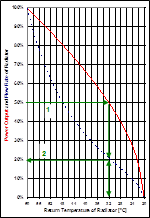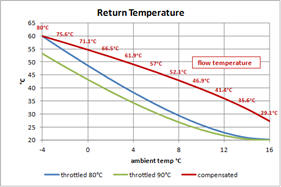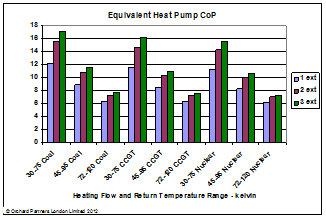|
Consulting Engineers, Heating, Domestic Hot Water, Heat Networks, CHP and Building Services
|
NEWS:
BREXIT AN OPPORTUNITY TO REFORM ANOMALIES IN EU ENERGY SECTOR DIRECTIVES?
Orchard Partners Featured in CIBSE
Journal click link below to read:
MAKING THE MOST OF CHP
Documents related to CIBSE Journal
article:
BSRIA Guide CHP for Existing Buildings
BSRIA Guide Variable-Flow Water Systems
CHP how its COP is a Function of Flow
and Return Temperatures
Design and specification work to maximise fuel use using condensing
boilers, condensing CHP and fully variable flow heat networks for new
build, retrofitting and improving the performance of existing
installations. Emphasis on supply of low CO2 piped heat from CHP
electric heat pumps, renewable heat and solar thermal. Objective to
maximise CO2 displacement by balancing investment in fabric improvement
and low carbon heat sources to meet clients domestic hot water base
load and their ventilation heat loads.
Analysis and resolution of heat distribution problems in
domestic and commercial systems with poor supply of heat or domestic
hot water. Expert witness work associated with heating systems.
Economic analysis of CHP and how to model its impact on the respective
heat and electricity sectors and their networks.
Assistance
to other consulting engineers through transfer of proven design's and
schematics for fully variable flow systems. Arrangements for the
integration of CHP engines using hydraulic principles with boilers so
that the low CO2 heat source, the CHP or the electric heat pump leads
the heat supply. This is something that is problematic with
many forms of temperature control.
|
|


|
National energy strategy work, Lithuania, Kaliningrad, St Petersburg, Belarus, Ukraine, Crimea. and due diligence work Romania, Kazakhstan.
Our EU funded Ecostiler project
www.ecostiler.com.optimises
heat network parameters for decarbonising and retrofitting the UK
domestic sector. By upgrading the quality of some of the 480 TWh
per annum of low grade waste heat, from electricity generation, it
can displace part of the gas supply to our domestic sector of 267 TWh
per annum.
Workshops in London:
"So you think your boilers are condensing,"
explaining why many boilers purchased to operate in condensing mode do
not, due to the way they are connected to the heating and domestic hot
water systems.
"Can you trust your model" explained how Dukes, EUETS, and the EU CHP convention result in heat consumers subsidising electricity consumers.
|

|
Energy and Exergy analysis for CHP
Using fundamental first and second laws of thermodynamics and perfect market principles.
First law energy always conserved, Second law reason why heat has to be rejected in thermal power plant to produce power.
Orchard CHP convention
Developed
for simpler modelling of CHP avoiding assumption that alternative heat
comes only from a boiler and by generating a fuel use per unit of the
heat from the CHP allows robust analysis of heat network effects.
Extension of principle with recognition that CHP is a virtual heat pump
allows a common metric to be used to compare heat from electric heat
pumps and heat from CHP through their Coefficient of Performance or
COP, a measure of the number of units of heat useful energy per unit of
electricity use.
Exergy analytical work
Applied
to the EU Carnot method for renewable CHP which differs from the method
in the Cogeneration Directive which we analysed as part of our
Ecostiler project work.
|
|
|
|
|
|
|
|

|
|